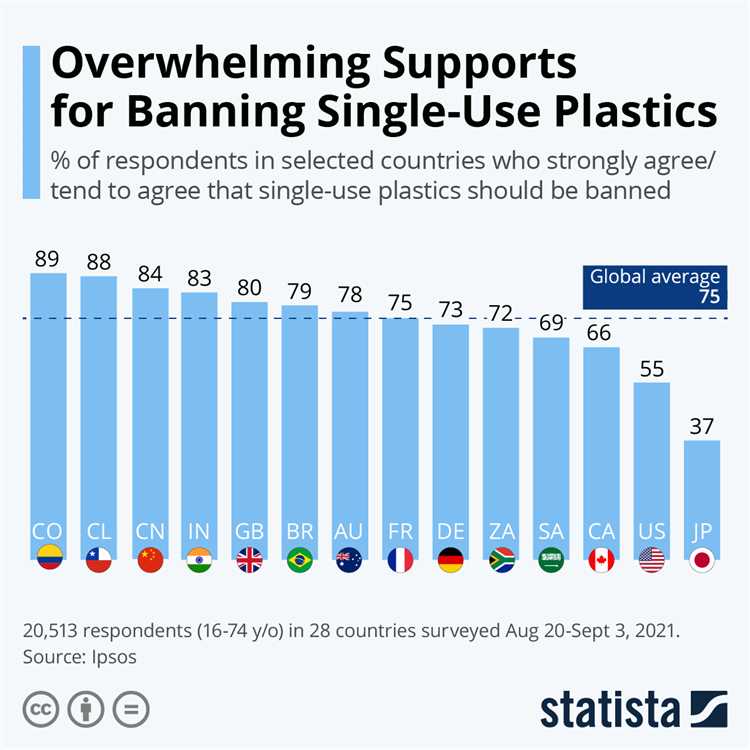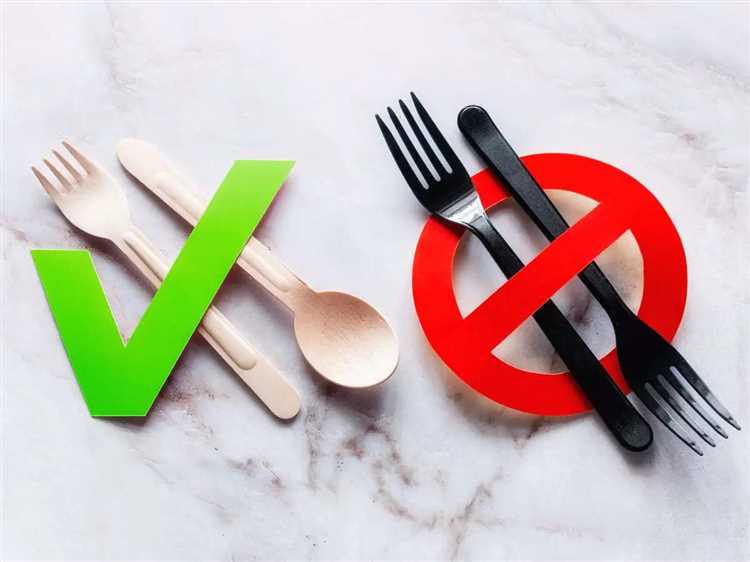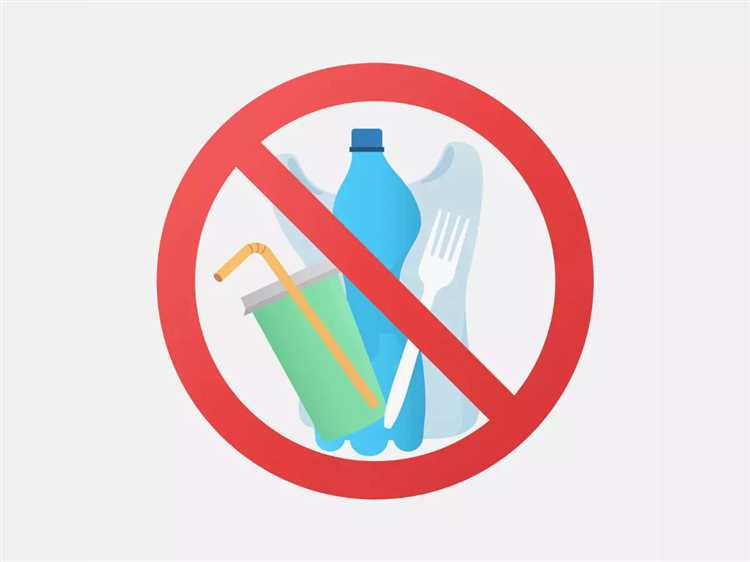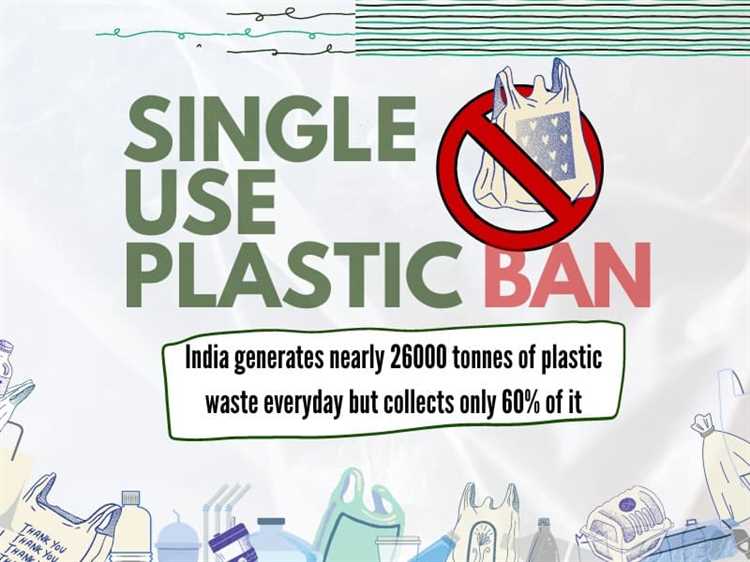
In recent years, there has been a growing concern about the detrimental impacts of single-use plastic on the environment and human health. Single-use plastic, which includes items such as plastic bags, straws, and food containers, is designed to be used once and then discarded. However, these items often end up in landfills or polluting our oceans, causing harm to wildlife and contributing to the global plastic pollution crisis.
To address this issue, many countries and cities around the world have implemented restrictions and regulations on single-use plastic. Governments are recognizing the need to reduce our reliance on disposable plastics and promote more sustainable alternatives.
Some of the common measures taken include outright bans on certain single-use plastic items, such as plastic bags or microbeads in personal care products. Other regulations focus on encouraging businesses and individuals to reduce their plastic waste by implementing fees or taxes on single-use plastic items. Furthermore, there is a growing movement towards promoting reusable and recyclable alternatives, such as reusable bags, metal straws, and compostable food containers.
These restrictions and regulations are aimed at not only reducing plastic pollution but also changing the way we consume and dispose of plastic. By limiting the availability and use of single-use plastic, it is hoped that individuals and businesses will be encouraged to adopt more sustainable practices and explore alternative solutions.
While progress has been made in many regions, the battle against single-use plastic is far from over. The global nature of the plastic pollution problem requires international cooperation and continued efforts to find innovative solutions. It is essential for individuals, businesses, and governments to work together to reduce our reliance on single-use plastic and move towards a more sustainable future.
- Is single-use plastic banned?
- Global Efforts
- Country-level Bans and Restrictions
- Local Restrictions and Regulations
- Latest restrictions on single-use plastic
- Regulations on single-use plastic
- Types of single-use plastic targeted
- Impact and benefits of regulations
- Impact of single-use plastic on the environment
- Pollution
- Habitat Destruction
- Alternatives to single-use plastic
- Benefits of banning single-use plastic
- Future outlook for single-use plastic regulations
- 1. Strengthening of existing regulations
- 2. Introduction of new regulations
- Question-answer:
- Is single-use plastic banned in all countries?
- What are some examples of single-use plastic?
- What are the environmental impacts of single-use plastic?
- Are there any alternatives to single-use plastic?
- Can individuals make a difference in reducing single-use plastic?
- What is single-use plastic?
Is single-use plastic banned?
Single-use plastic has become a major environmental concern in recent years due to its harmful effects on the planet. In response to this issue, many countries and regions around the world have implemented restrictions and regulations on the use of single-use plastic.
Global Efforts
The United Nations and other international organizations have been leading efforts to combat single-use plastic waste. They aim to raise awareness about the environmental impact of single-use plastic and encourage countries to take action.
Country-level Bans and Restrictions
Many countries have implemented bans or restrictions on single-use plastic items such as plastic bags, straws, and cutlery. These measures vary in scope and intensity, with some countries completely banning single-use plastic while others have partial bans or impose levies on their usage.
For example, some countries prohibit the distribution or sale of single-use plastic bags, while others charge a fee for their usage. Some countries have implemented bans on plastic straws and cutlery, promoting alternative materials such as paper or compostable alternatives.
Local Restrictions and Regulations
Beyond national-level actions, many cities and local municipalities have also implemented their own restrictions on single-use plastic. This includes bans on plastic water bottles in government buildings, restrictions on single-use plastic in restaurants and cafes, and requirements for businesses to provide alternative, reusable options for packaging and containers.
These local efforts aim to reduce single-use plastic waste on a smaller scale and create a more sustainable environment for their communities. They often work in parallel with national regulations to maximize the impact and effectiveness of the measures.
In conclusion, the issue of single-use plastic waste is being addressed globally through the implementation of bans, restrictions, and awareness campaigns. The aim is to reduce the consumption and production of single-use plastic and promote more sustainable alternatives. However, the specific regulations and restrictions vary from country to country and region to region.
Latest restrictions on single-use plastic

With the increasing concern over the environmental impact of single-use plastic, countries and governments worldwide are implementing strict restrictions and regulations to reduce its usage. Here are some of the latest restrictions on single-use plastic:
Plastic bag bans: Many countries have implemented bans on single-use plastic bags in retail stores. Customers are encouraged to bring their own reusable bags, or they can purchase reusable bags at the store. Some countries have also introduced charges for plastic bags as an additional deterrent.
Straw bans: Plastic straws have become a major target for restrictions due to their harmful impact on marine life. Many cities and regions have banned or restricted the use of plastic straws, with alternatives like paper or metal straws being encouraged.
Plastic cutlery and stirrers: Several countries have prohibited the use of plastic cutlery and stirrers, which are often used in fast-food restaurants and takeaways. Instead, eco-friendly alternatives such as wooden or bamboo cutlery and stirrers are being promoted.
Plastic bottle restrictions: In an effort to reduce plastic waste, some countries have implemented restrictions on the sale and distribution of single-use plastic bottles. This can include levies, deposit schemes, or a ban on certain types of plastic bottles.
Microbeads ban: Microbeads, tiny pieces of plastic found in some cosmetics and personal care products, have been banned in many countries due to their harmful impact on marine life. Manufacturers are required to find alternative ingredients that are more environmentally friendly.
Expanded polystyrene bans: Some regions have banned the use of expanded polystyrene (EPS), commonly known as Styrofoam, due to its non-biodegradable nature and difficulty in recycling. Alternatives like compostable or recyclable materials are being encouraged as replacements.
These are just a few examples of the latest restrictions on single-use plastic. It is clear that governments and communities are taking significant steps to tackle the issue of plastic pollution and promote more sustainable alternatives.
Regulations on single-use plastic

In response to the growing concern over plastic pollution and its impact on the environment, many countries and regions have implemented regulations to restrict the use of single-use plastic items. These regulations aim to reduce plastic waste and promote the use of more sustainable alternatives.
Types of single-use plastic targeted

The specific types of single-use plastics targeted by these regulations vary by country and region. However, some common items that are frequently restricted include plastic bags, straws, cutlery, stirrers, and takeout containers.
Plastic bags: Many places have banned or imposed fees on single-use plastic bags, encouraging consumers to use reusable bags instead. Some countries have even implemented total bans on plastic bags, while others have taken a more phased approach.
Straws: Straws have also become a focus of plastic restrictions due to their small size and limited utility. Some places have prohibited the use of plastic straws entirely, while others have adopted policies that require customers to specifically request straws.
Cutlery and stirrers: Plastic cutlery and stirrers are commonly targeted due to their single-use nature and the availability of more sustainable alternatives, such as wooden or compostable options. Many places have implemented bans or limitations on the distribution of plastic cutlery and stirrers.
Impact and benefits of regulations
The impact of these regulations on single-use plastic items has been significant. By reducing the use and production of these items, countries and regions have been able to curb plastic waste and prevent it from entering landfill or polluting our oceans and waterways.
In addition to the environmental benefits, these regulations have also spurred innovation in the development of alternative materials and packaging options. Businesses and individuals have been encouraged to adopt more sustainable practices and explore reusable, recyclable, and compostable alternatives.
Overall, regulations on single-use plastic are an important step towards addressing the global plastic pollution crisis. By reducing our reliance on these items, we can help protect the environment and build a more sustainable future.
Impact of single-use plastic on the environment
Single-use plastic, such as plastic bags, bottles, and packaging, has a significant impact on the environment. The production, usage, and disposal of these products contribute to various environmental issues, including pollution, habitat destruction, and climate change.
Pollution

Single-use plastic is a significant contributor to pollution, particularly in oceans and waterways. It is estimated that over 8 million metric tons of plastic waste enter the oceans each year. This plastic debris not only affects marine life but also poses a threat to human health. Small pieces of plastic, known as microplastics, are ingested by marine animals and can enter the food chain, ultimately reaching humans.
Habitat Destruction
The production of single-use plastic requires the extraction of raw materials, such as fossil fuels, and contributes to deforestation and habitat destruction. Mining and drilling operations disrupt natural habitats, leading to the displacement and extinction of various plant and animal species. Additionally, the improper disposal of plastic waste can clog waterways, leading to flooding and further destruction of ecosystems.
Climate Change
The production and incineration of single-use plastic releases greenhouse gases, contributing to climate change. Plastic is derived from fossil fuels, and its manufacturing process emits large amounts of carbon dioxide and other greenhouse gases. The improper disposal of plastic waste also leads to the release of methane, a potent greenhouse gas, from landfills.
In conclusion, the impact of single-use plastic on the environment is significant and multifaceted. From pollution to habitat destruction and climate change, the consequences of our reliance on these disposable products are widespread. It is crucial that we take steps to reduce our consumption of single-use plastic and promote sustainable alternatives to protect the environment for future generations.
Alternatives to single-use plastic
Single-use plastic is harmful to the environment and contributes to pollution and waste. Thankfully, there are many alternatives to single-use plastic that can help reduce our reliance on it. Here are some sustainable alternatives:
- Reusable bags: Instead of using plastic bags, opt for reusable bags made of cloth, jute, or other eco-friendly materials. These bags can be used multiple times and are more durable.
- Stainless steel water bottles: Instead of buying bottled water, invest in a high-quality stainless steel water bottle. It can be used for years and helps reduce the consumption of plastic water bottles.
- Bamboo or metal straws: Plastic straws are a major contributor to plastic pollution. Switch to reusable alternatives like bamboo or metal straws, which are eco-friendly and can be easily cleaned and used multiple times.
- Glass containers: Instead of storing food in plastic containers, opt for glass containers. They are microwave-safe, durable, and can be reused for a long time.
- Beeswax wraps: Replace plastic wraps and sandwich bags with beeswax wraps. They are reusable and eco-friendly, and can be used to wrap food items for freshness.
- Biodegradable cutlery: Instead of plastic cutlery, choose biodegradable options made from bamboo or compostable materials. These alternatives break down easily and do not contribute to plastic waste.
By making these small changes in our daily lives, we can greatly reduce our impact on the environment and help create a more sustainable future.
Benefits of banning single-use plastic
Banning single-use plastic can have several positive impacts on the environment and society as a whole. Here are some of the key benefits:
| 1. Reduces pollution | Banning single-use plastic helps to decrease plastic pollution in oceans, rivers, and landfills. It can prevent plastic bags, straws, and utensils from ending up in waterways and harming marine life. |
| 2. Protects wildlife | By banning single-use plastic, we can protect wildlife from ingesting or getting entangled in plastic waste. Many animals mistake plastic for food and can suffer severe consequences, including death. |
| 3. Conserves resources | Reducing the use of single-use plastic means conserving valuable resources that are used in the production of these items, such as oil and water. By using alternative materials or reusable products, we can minimize waste and resource consumption. |
| 4. Reduces greenhouse gas emissions | The production and disposal of single-use plastic contribute to greenhouse gas emissions. By banning these items, we can reduce the carbon footprint associated with their manufacturing and decomposition, helping to mitigate climate change. |
| 5. Promotes innovation | Banning single-use plastic encourages the development and adoption of alternative materials and more sustainable packaging solutions. This can drive innovation in industries and create opportunities for businesses to develop eco-friendly products. |
Overall, banning single-use plastic offers a range of benefits that help protect our environment, wildlife, and natural resources. It is an important step towards creating a more sustainable and healthier planet for future generations.
Future outlook for single-use plastic regulations
The future outlook for single-use plastic regulations is constantly evolving as governments and organizations around the world recognize the need to reduce plastic waste and its environmental impact. Here are some key trends and developments to watch for in the coming years:
1. Strengthening of existing regulations
Many countries have already implemented restrictions on single-use plastics, such as bans on plastic bags or straws. As the negative consequences of plastic pollution become more apparent, there is a growing push to further strengthen these regulations. This may include expanding the scope of banned items or imposing stricter penalties for non-compliance.
2. Introduction of new regulations
In addition to strengthening existing regulations, we can expect to see the introduction of new regulations targeting other single-use plastic items. This could include products like disposable cutlery, cups, and food containers. Governments and organizations may also focus on promoting alternatives to single-use plastics, such as biodegradable materials or reusable options.
Strong public support for plastic reduction measures and growing awareness of the environmental impact of single-use plastics are driving these changes. As consumers become more conscious of their plastic consumption, they are demanding action from their governments and pushing for stricter regulations.
Emphasis on recycling and circular economy
Another aspect of future plastic regulations is an increased emphasis on recycling and the development of a circular economy for plastics. Governments and organizations are investing in recycling infrastructure and technologies to increase plastic recycling rates and reduce the need for new plastic production. This involves implementing effective collection and sorting systems, investing in innovative recycling technologies, and encouraging the use of recycled plastics in production processes.
International collaboration
Efforts to regulate single-use plastics are not limited to individual countries. There is a growing recognition that plastic pollution is a global issue that requires international cooperation. Governments and organizations are coming together to share best practices, develop common standards, and work towards global agreements to address the issue of single-use plastics.
In conclusion, the future outlook for single-use plastic regulations is promising. Governments and organizations are taking action to reduce plastic waste and promote sustainable alternatives. By strengthening existing regulations, introducing new measures, emphasizing recycling, and fostering international collaboration, there is hope for a future with less single-use plastic and a healthier planet.
Question-answer:
Is single-use plastic banned in all countries?
No, single-use plastic is not banned in all countries. There are countries that have implemented bans on certain types of single-use plastic, while others have only put in place restrictions or regulations.
What are some examples of single-use plastic?
Examples of single-use plastic include plastic bags, straws, cutlery, coffee stirrers, and styrofoam food containers. These items are designed to be used once and then discarded.
What are the environmental impacts of single-use plastic?
Single-use plastic has significant environmental impacts. It often ends up in landfills or in the ocean, where it can harm wildlife and ecosystems. It takes hundreds of years to break down, contributing to long-term pollution. Single-use plastic also contributes to the depletion of finite natural resources used in its production.
Are there any alternatives to single-use plastic?
Yes, there are alternatives to single-use plastic. Some examples include reusable cloth bags instead of plastic bags, metal or bamboo straws instead of plastic straws, and bamboo or wooden cutlery instead of plastic cutlery. These alternatives are more sustainable and can help reduce plastic waste.
Can individuals make a difference in reducing single-use plastic?
Yes, individuals can make a difference in reducing single-use plastic. By making small changes in daily habits such as bringing reusable bags and water bottles, avoiding single-use plastic straws and cutlery, and recycling properly, individuals can help reduce plastic waste and contribute to a more sustainable future.
What is single-use plastic?
Single-use plastic refers to any plastic item or product that is designed to be used only once before it is thrown away or recycled. Examples of single-use plastic include plastic bags, straws, cutlery, and water bottles.